The Margherita pizza stands as a testament to the beauty of simplicity in the culinary world. Even though it looks easy, making the perfect Margherita pizza is quite a challenge.
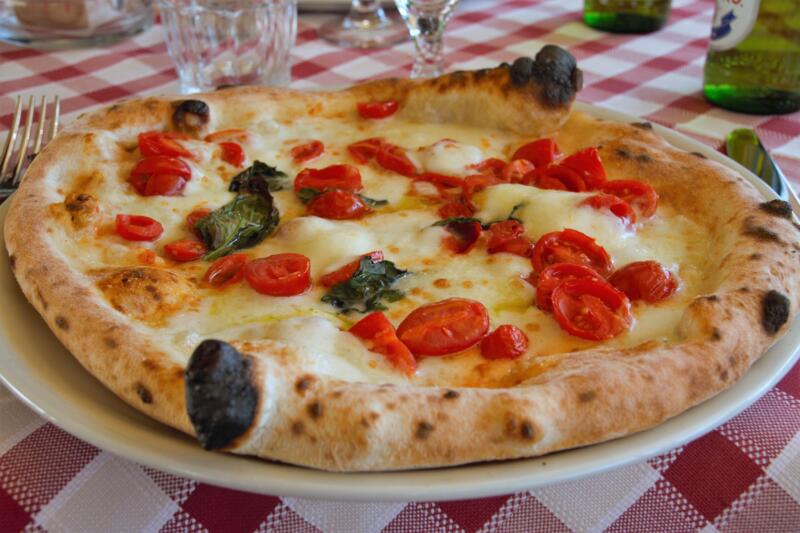
It’s not just about the ingredients but the skill of the chef. Only a really good chef can get it just right, turning this pizza into something truly special.
Let’s dive in and discover what makes the Margherita pizza so amazing!
In this article:
What is a Margherita Pizza?
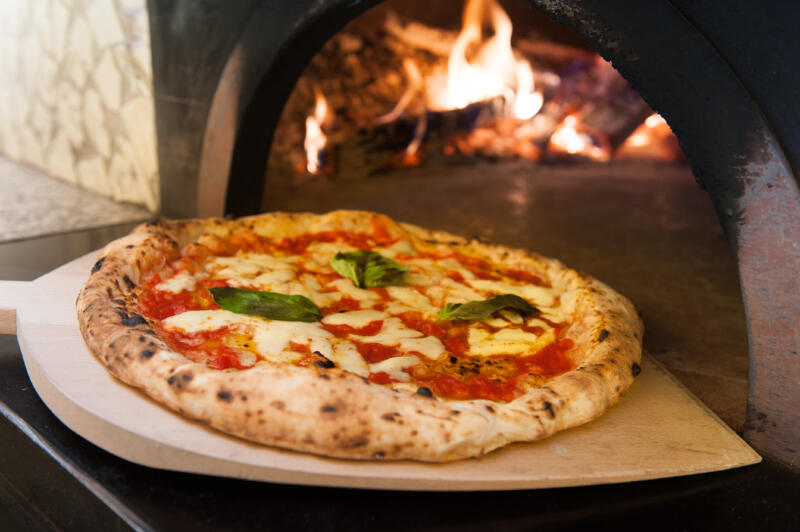
The Margherita pizza is a classic Italian delicacy known for its elegant simplicity.
Unlike other pizzas laden with a myriad of toppings, the Margherita boasts just a few key ingredients: fresh tomatoes or tangy tomato sauce, creamy mozzarella cheese, basil, and extra virgin olive oil.
While other pizzas might mask or hide the nuances of their components, the Margherita celebrates them, offering a harmonious blend where each element is distinctly recognized and appreciated.
History of the Margherita Pizza
Biting into a Margherita slice is like tasting a slice of Italian history.
Originating in 19th-century Naples, it’s said that pizza maker Raffaele Esposito crafted this pizza in honor of Queen Margherita of Savoy’s visit.
The pizza, with its vibrant red tomato sauce, white mozzarella, and green basil, mirrored the colors of the Italian flag, symbolizing national pride.
While this tale is widely shared, its historical accuracy is debated by some.
Regardless of its origins, there’s no denying the Margherita pizza’s iconic status and its representation of Italian culinary pride.
The Margherita pizza was an instant hit. Its popularity spread like wildfire, not just in Naples, but across Italy and eventually, the world.
Today, it’s one of the most beloved pizza varieties, cherished for its simplicity, authenticity, and delicious taste.
Key Margherita Ingredients
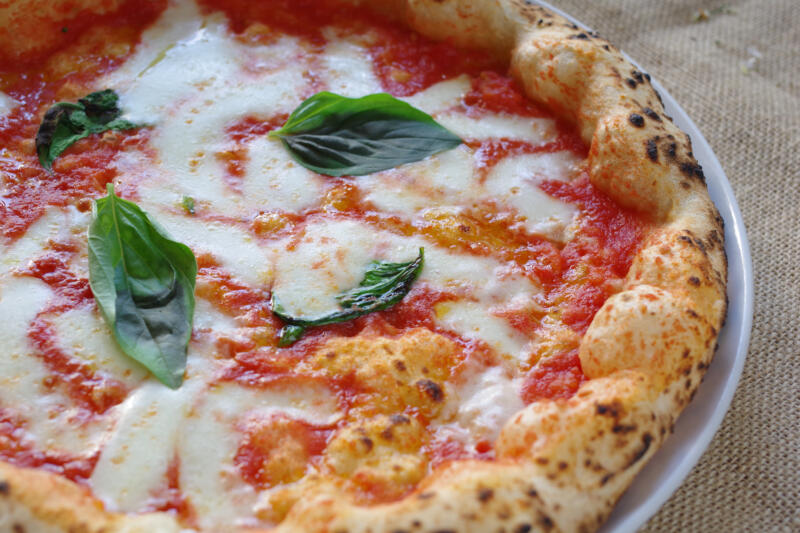
The charm of a Margherita pizza is in the simplicity of its ingredients. Each component, from the dough to the toppings, plays a crucial role in creating the pizza’s distinctive flavor and texture.
Let’s take a closer look at these key ingredients and understand what makes them so special.
Dough
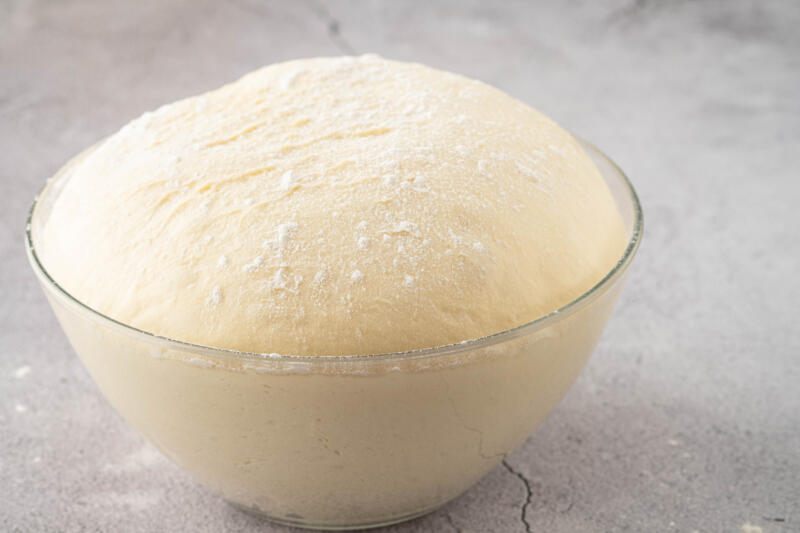
The heart of a stellar Margherita pizza lies in its dough, crafted from basic ingredients like warm water, sea salt, sugar, and instant yeast.
However, the magic touch for that delectable, chewy crust is the flour.
“00” flour, also known as Doppio zero, is the top choice for Italian pizzas because of its high protein content.
This protein richness produces more gluten, giving the crust its signature chewy texture that’s simply irresistible.
Sauce: Tomato Sauce or Fresh Tomatoes
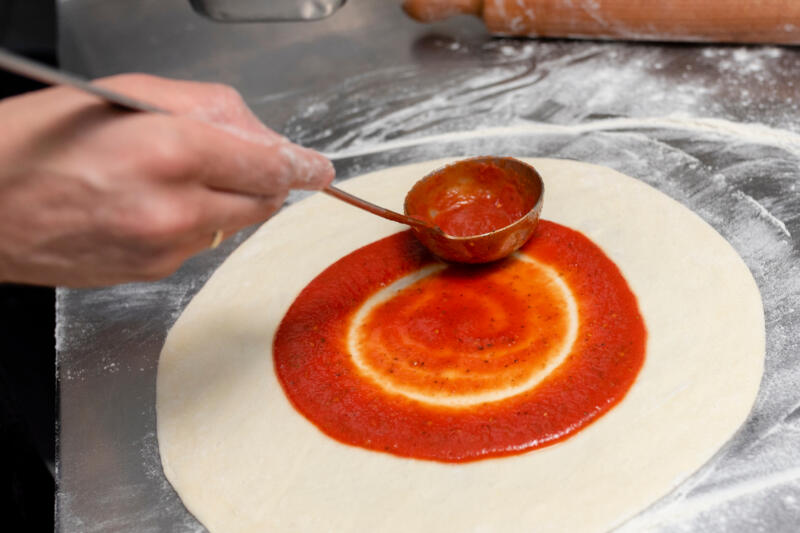
When it comes to the sauce, you have two options: tomato sauce or fresh tomatoes.
Tomato sauce is typically made by blending San Marzano tomatoes with sea salt.
These tomatoes, a variety of plum tomatoes, are favored for their higher solid content and less juice, which helps control the moisture in the sauce.
Alternatively, fresh tomatoes can be blended until smooth for a fresher, more vibrant flavor.
Cheese: Mozzarella or Fresh Mozzarella
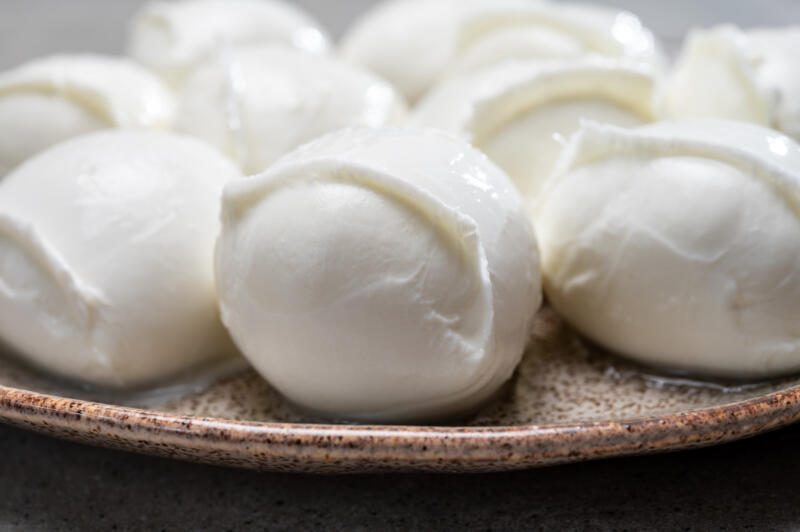
The distinction between mozzarella and fresh mozzarella is crucial when crafting a Margherita pizza.
For an authentic Margherita pizza, many purists prefer fresh mozzarella for its creamy texture and fresh flavor.
However, the choice ultimately depends on personal preference and the desired pizza texture.
Mozzarella, often sold as blocks or shreds, is typically aged longer, resulting in a firmer texture and a mild, salty flavor. It melts uniformly, achieving a golden brown hue when baked.
On the other hand, fresh mozzarella is sold in liquid-filled containers or vacuum-sealed packages.
It’s softer, with a moist texture and a delicate, milky taste. When used on pizza, it offers a creamier consistency and may not brown as uniformly as its aged counterpart.
Toppings: Basil Leaves and Extra-Virgin Olive Oil

Finally, the toppings. A Margherita pizza is traditionally topped with fresh basil leaves and a light drizzle of extra-virgin olive oil.
The inclusion of fresh basil breathes life into the pizza, offering a refreshing taste and a splash of green.
It’s best to sprinkle finely sliced basil on the pizza after it’s baked to preserve its flavor and aroma.
The olive oil should be poured lightly to avoid overpowering the other flavors.
These simple yet impactful toppings are the final touch that brings the Margherita pizza to life.
The Making Process
Preparing the Dough
The first step in making a Margherita pizza is preparing the dough. This begins with combining warm water (108F or 42C), sea salt, sugar, and instant yeast.
While other flours can be used to make pizza, 00 flour or “doppio zero” is favored in traditional Italian pizza-making for its unique characteristics that contribute to the ideal texture, flavor, and appearance of the pizza crust.
After mixing and kneading the dough, it’s allowed to rest until its volume has doubled.
Assembling the Pizza
Once the dough is prepared and has risen beautifully, it’s time to assemble the pizza.
Begin by applying a light coating of tomato sauce or placing fresh tomato slices on the dough, ensuring you leave a slight edge for the crust.
Next, arrange mozzarella or fresh mozzarella cheese evenly across the pizza.
If using fresh mozzarella, ensure you drain any excess liquid to prevent the pizza from becoming soggy.
Keep in mind that simplicity is key for a Margherita pizza. Adding too many toppings can lead to a limp crust and overshadow the pizza’s delicate flavors.
The pizza is now assembled and ready for the oven.
Baking the Pizza
When the dough is set, it’s baking time for the pizza.
A pizza stone is a must-have for this process, as it ensures an evenly baked crust.
The oven and pizza stone should be preheated to a high temperature, typically around 500°F (260°C), to mimic the conditions of a traditional pizza oven.
The pizza continues to bake until the edges turn a golden hue and the cheese bubbles, acquiring a hint of char.
Moisture control is crucial during baking to prevent a soggy pizza.
The result? A perfectly baked Margherita pizza, ready to be enjoyed.
Finishing Touches
After the pizza is baked to golden perfection, it’s time for the finishing touches.
Lightly drizzle some extra-virgin olive oil over the freshly baked pizza. This not only adds a touch of rich flavor but also gives the pizza a beautiful sheen.
A sprinkle of sea salt can enhance the flavors of the pizza, and additional fresh basil leaves can add a burst of freshness.
What to Serve with a Margherita Pizza?
Antipasti
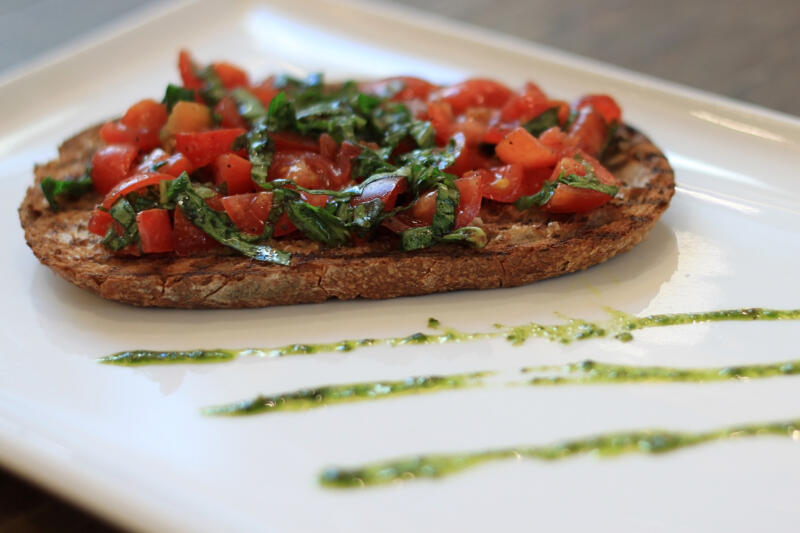
When enjoying a Margherita pizza, pairing it with the right antipasti can elevate the entire dining experience.
Traditional Italian antipasti are designed to tantalize the palate and prepare it for the main course.
Consider starting with a platter of thinly sliced prosciutto and salami, accompanied by marinated olives and artichokes.
Bruschetta, with its toasted bread topped with fresh tomatoes, basil, and a drizzle of olive oil, complements the flavors of the Margherita pizza beautifully.
Side Dishes
Pairing a Margherita pizza with a side dish, especially a fresh salad or roasted vegetables, can provide a nutritional balance to the meal, enhancing both flavor and health benefits.
A simple green salad or a Caprese salad, with its fresh tomatoes, mozzarella, and basil, mirrors the ingredients of a Margherita pizza and provides a refreshing contrast to the pizza’s richness.
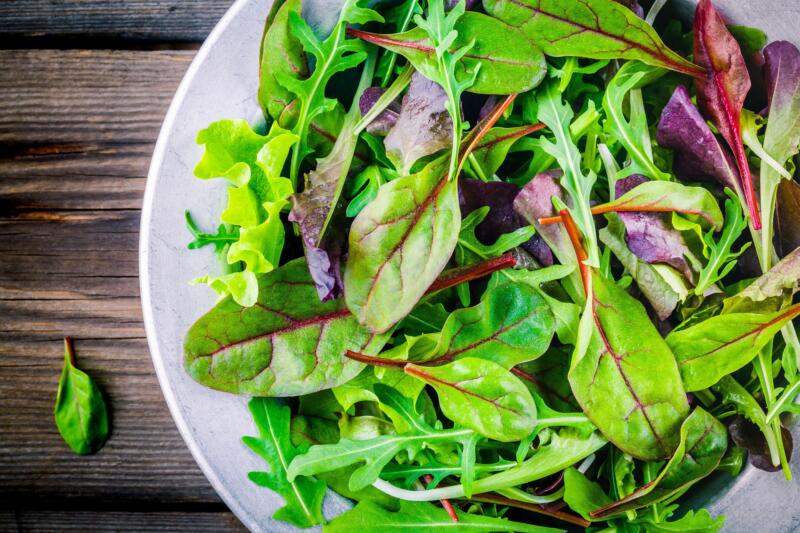
A fresh arugula salad, lightly dressed with olive oil, lemon, and shaved Parmesan, offers a peppery contrast to the pizza’s creamy mozzarella.
Grilled vegetables, such as zucchini, bell peppers, and eggplant, drizzled with balsamic reduction, add a smoky flavor profile that harmonizes with the pizza’s charred crust.
For a lighter touch, a cucumber and fennel salad with a lemon vinaigrette provides a refreshing counterpoint.
And if you’re looking to indulge a bit more, a plate of fried calamari can be a crowd-pleaser.
Wine Pairings with Margherita Pizza
When it comes to pairing wine with a Margherita pizza, the choices are as delightful as they are diverse.
Starting with the effervescence of Prosecco, this sparkling wine’s light and bubbly nature complements the creamy mozzarella and tangy tomato sauce, adding a refreshing zest to each bite.
For those who lean towards still wines, crisp Italian white wines, such as Pinot Grigio, offer a delicate balance of acidity and fruitiness that enhances the pizza’s fresh basil and tomato components.

If you’re in the mood for a cocktail, an Italian spritz, with its blend of Prosecco, a splash of a bitter liqueur, and soda, offers a tantalizing aperitif that sets the stage for the pizza.
On the red wine front, light Italian varieties like Barbera, Dolcetto, or Valpolicella are excellent choices.
Their subtle tannins and vibrant fruit notes don’t overpower the pizza’s flavors but rather meld harmoniously, creating a symphony of taste that celebrates the essence of Italian dining.
Other Drinks Pairing
Craft beers, particularly those with a balance of malt and hops, can also pair well with a Margherita pizza.
For non-alcoholic options, consider Italian sodas or sparkling water, which can provide a refreshing counterpoint to the pizza’s flavors.
Ultimately, the best pairings are what you love most. So, explore and find what complements your Margherita pizza best.
Closing Thoughts
Embarking on this exploration of the Margherita pizza has been a delightful dive into the heart of Italian gastronomy.
I hope this article has not only answered your question, “What is a pizza Margherita?” but also inspired you to try making one yourself.
When recreating this pizza, focus on sourcing fresh ingredients for the best flavor. Pair it with a light Italian wine or Prosecco to enhance the dining experience.
Buon appetito and happy pizza crafting!